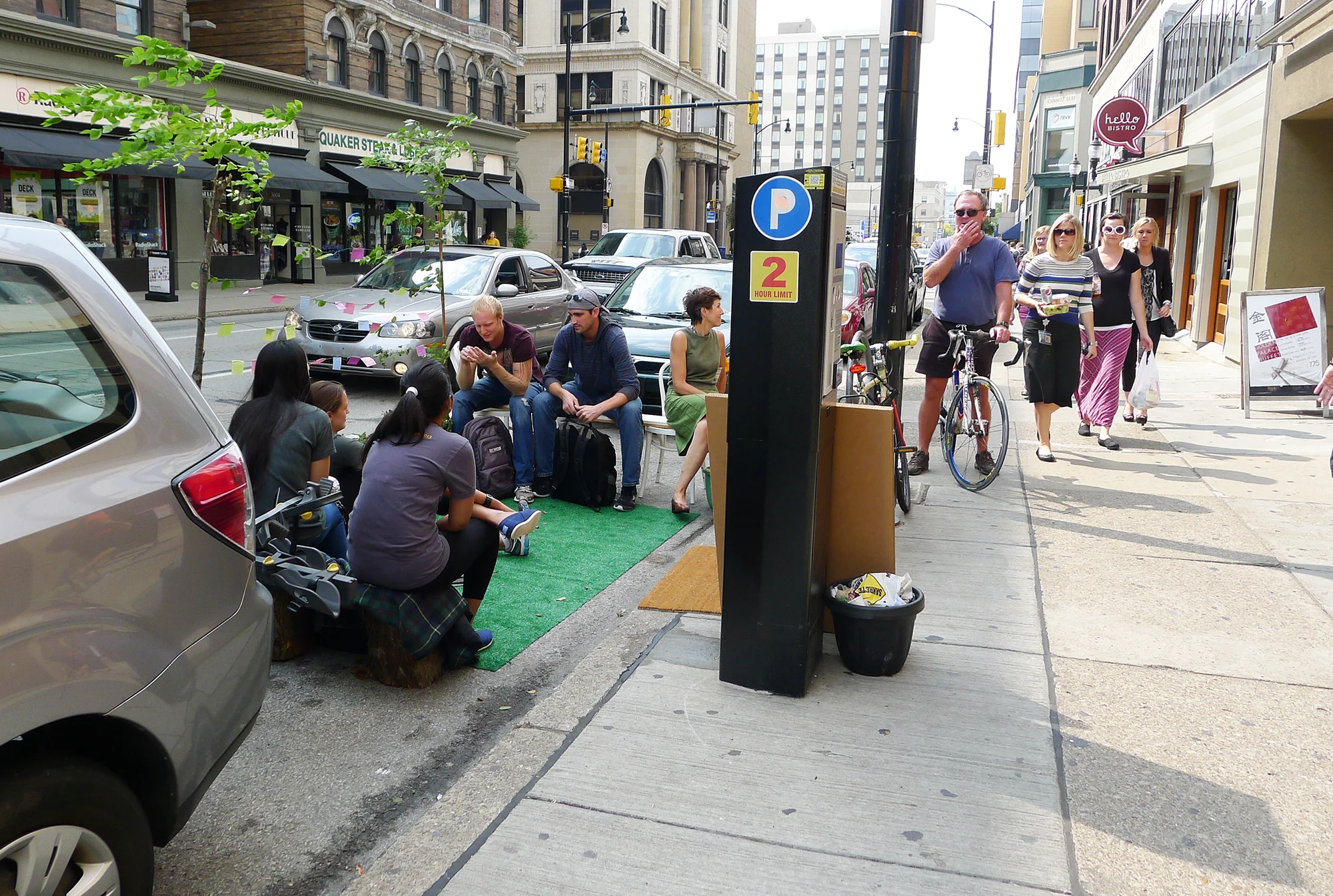Group project | 1 week @ 10% time | Side project | 2013
Project OVERVIEW
I organized and led a CMU Design group to participate in PARK(ing) Day, a national creative protest event where you turn a public parking spot into a park for a day.








PROCESS IN-DEPTH
APPROACH
We were excited to participate in the Parking Day project to help people envision what a city with less cars might look and feel like. But we were wary of the fact that these things can sometimes end up feeling like self-serving publicity stunts rather than an opportunity meaningful dialogue.
With a very limited budget for both materials and time, we wanted to be sure to focus on the message we wanted to send, and to avoid over-producing our space in a way that didn't really help accomplish our goals.
Design Principles
To help guide us, we created a few design principles:
FUNCTION (MOSTLY) OVER FORM
We were also mindful of trying to make the design very approachable, both in appearance, and quite literally – we wanted to invite conversation and visits to the “park” from passersby that weren’t already sustainability boosters. Our number one priority was making the park appear to be very obviously a park, our number two priority was drawing people in.
WALK THE TALK
We wanted to keep our methods inline with our earth-friendly message, which meant no buying new things to use for the space, or bringing in heavy-footprint sod, even though it would have made our spot look much sexier.
We stuck with a found-materials approach, and focused on the message we were trying to get out to people rather than the aesthetic appeal of our spot design.
INVITE INTERACTION
We decided to include two interactive elements in our park, as well as plenty of open space and seating. The first was prayer flag like display that would allow visitors to reflect on the park and leave a message (in Post-Its of course; we are designers). This also created a nice humanized barrier between the park and street.
Our second element was a plant-a-seed station. We had planned to encourage visitors to use disposable cups from nearby eateries to turn waste into growth by serving as seed planters to bring home a bit of a “park.” Poor weather for much of the day largely put a damper on engagement for the planting activity, but we were pleasantly surprised that we didn’t need an excuse to engage with people passing by – many took the impetus to ask themselves what we were up to.
RESULTS
A SURPRISING RESPONSE
After preparing ourselves for confrontations and arguments about our right to be in the space, we were were thrilled with the amount of encouragement we received. A few visitor looked upon us with dead stares when we said we wanted to give people an idea of what we could do with all this space if we didn’t need to use so much for parking. They said, "Well how would people get to work then?" When I explained they could take public transit, or live closer to work and then bike or walk, they were a bit flummoxed – it seemed as though this had honestly never occurred to them that there could be another way of doing things. That made the even feel like a real success - rather than confronting, guilting or arguing with people we really had opened up a few folks minds to new possibilities.
We got some press coverage in the CMU newspaper to help spread the word, and contributed to a growing crew of Parking Day participants in Pittsburgh. It’s just a day, and sure it’s a bit of a stunt, but this is exactly the kind of reaction we had hoped to get, and it made shuffling our schedule to squeeze in the event more than worth it.


